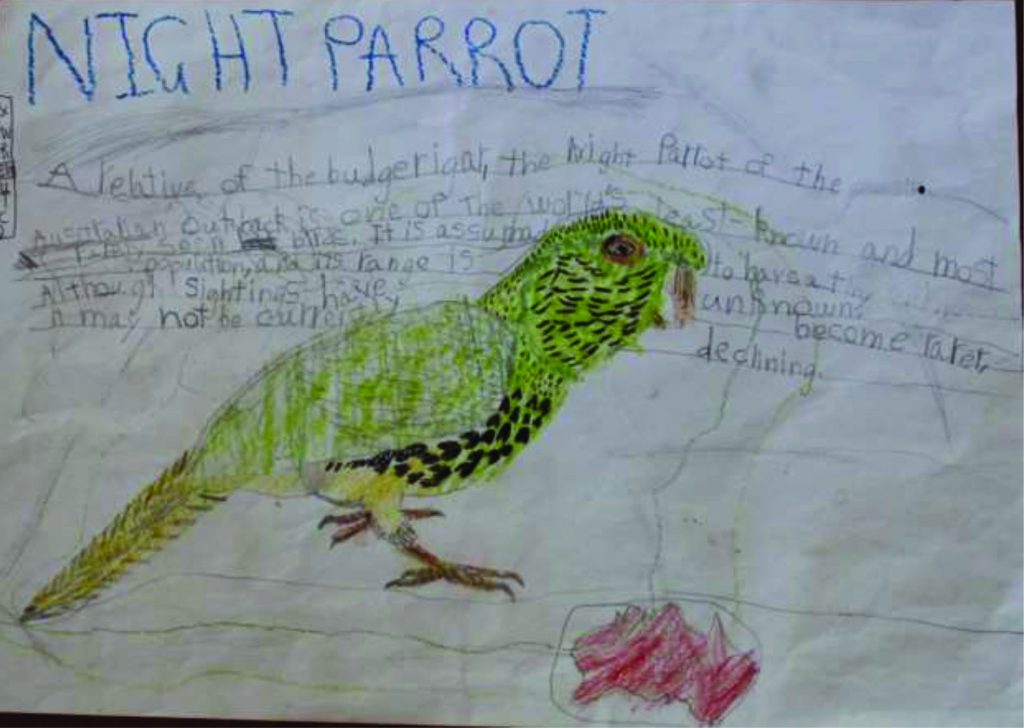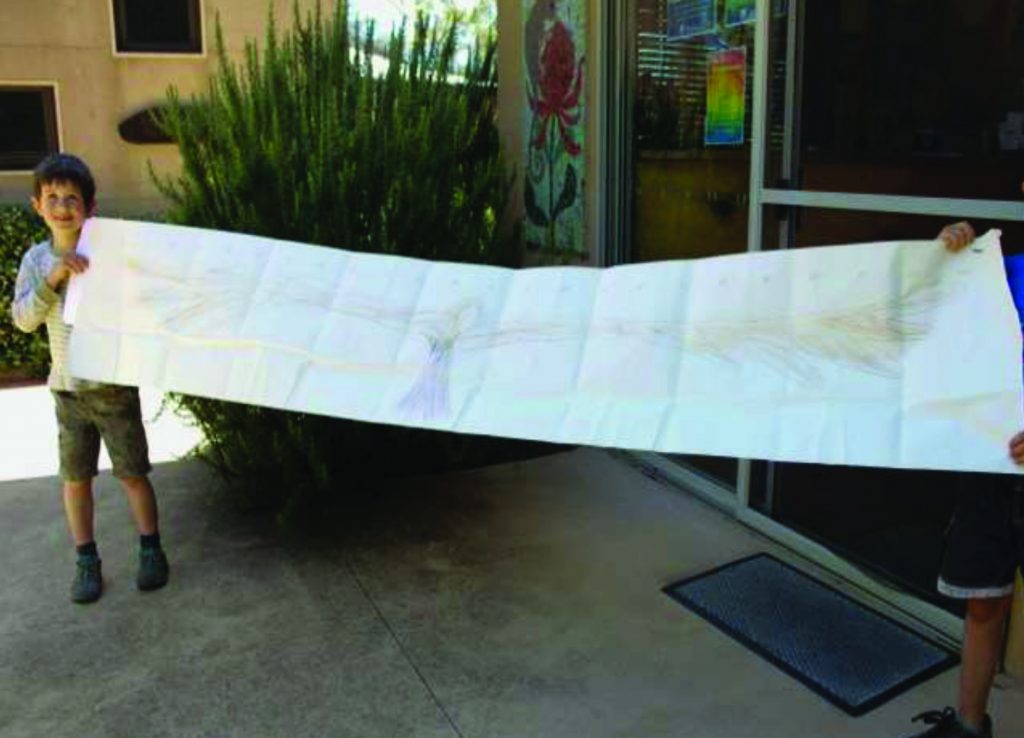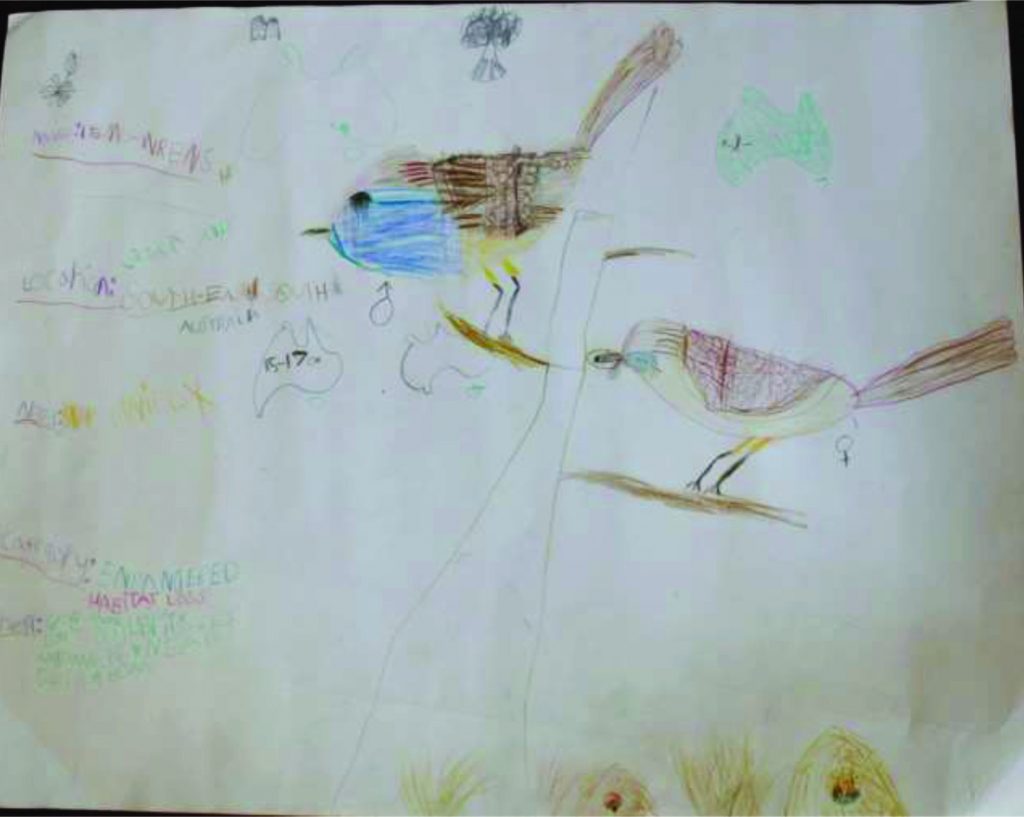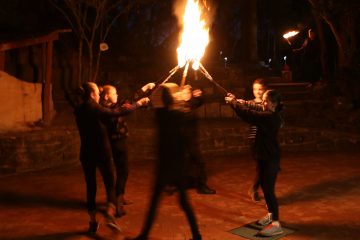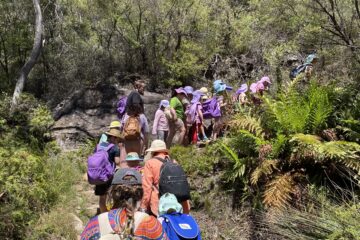By Julie Humphreys, Class 1/2 Teacher, Blue Mountains Steiner School, December 2019
At the Blue Mountains Steiner School, nestled in the beautiful bushland of Hazelbrook, where wallabies bound, Brown Cuckoo Doves sit silently on branches and water skinks rest, the children of Class 1/2 have been celebrating the complexity of our national identity. We have been sharing stories which include a history of the Australian landscape and its inhabitants.
We begin with a poem written by Class 1/2 in honour of the elusive Night Parrot (not from these parts), and within our poem we share insights on how the introduction of non-indigenous plants and animals has affected our land and its wildlife. This poem was part of a unit of work on threatened and endangered species and habitats.
The Night Parrot
by Class 1/2 BMSS
The Night parrot flies,
Through the night skies
Searching for seeds
Low down
On the ground
It does not like carrots
Although it’s a parrot
It would rather eat seeds,
Than European weeds.
As part of our studies, the children went on a day trip to the Charles Darwin Walk in Wentworth Falls. They searched for one of the rarest trees in the world, Eucalyptus copulans. We came to a Hanging Swamp, which was cool, wet and full of life, despite being threatened. We saw a Tiger Snake resting in the sun along the track and paddled in one of the Jamison creek rock pools.
Our lessons occur both in the classroom and in the bush. We approach all units of work using an integrated curriculum; where patterns in nature are found in our times tables (or perhaps it’s the other way around!), where scientific facts about habitats, ecosystems and animals are expressed through poetry and discovered through stories. The children experience abstract ideas through tangible experiences.
The children heard stories told by their teacher, combining the history of Australia through the eyes of European settlers and through the eyes of First Nations People. These stories were influenced by the work of Bruce Pascoe in his book Young Dark Emu – A Truer History and from the work of Wiradjuri elder Minmia Under the Quandong Tree. Pascoe shows how indigenous people have been growing crops for generations without causing the catastrophic degradation that cattle and other introduced species and crops have caused. Minmia brings to life the spirit of Indigenous stories through allowing the reader to understand the nature or essence of the grevillea, or the casuarina, and its relationship to the land, the people and the animals.
Each child made a project about an endangered animal or habitat of their choice. The subjects ranged from Hanging Swamps to Wrinklewort button grass, Grey Nurse Sharks to Bilbies. Such an array of subjects chosen, with ideas for how to protect them – build smaller houses, chop down fewer trees, don’t buy so many things from the shops. Wise words from our wise children.
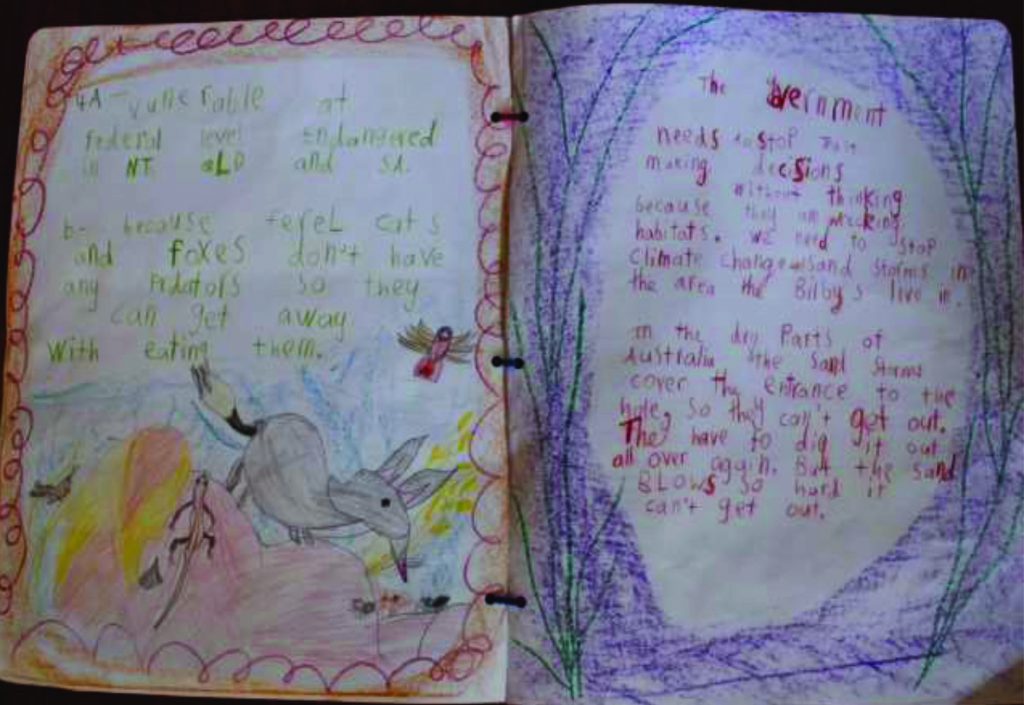
In keeping with our integrated curriculum, the class had recently learnt about our Australian currency via stories set in a market place from long ago where people were mostly self-sufficient. To bring these lessons to life, the class made newspaper pots and grew seedlings which were sold at a school stall. The money raised will be donated to helping the koalas injured in the recent fires near Newcastle.
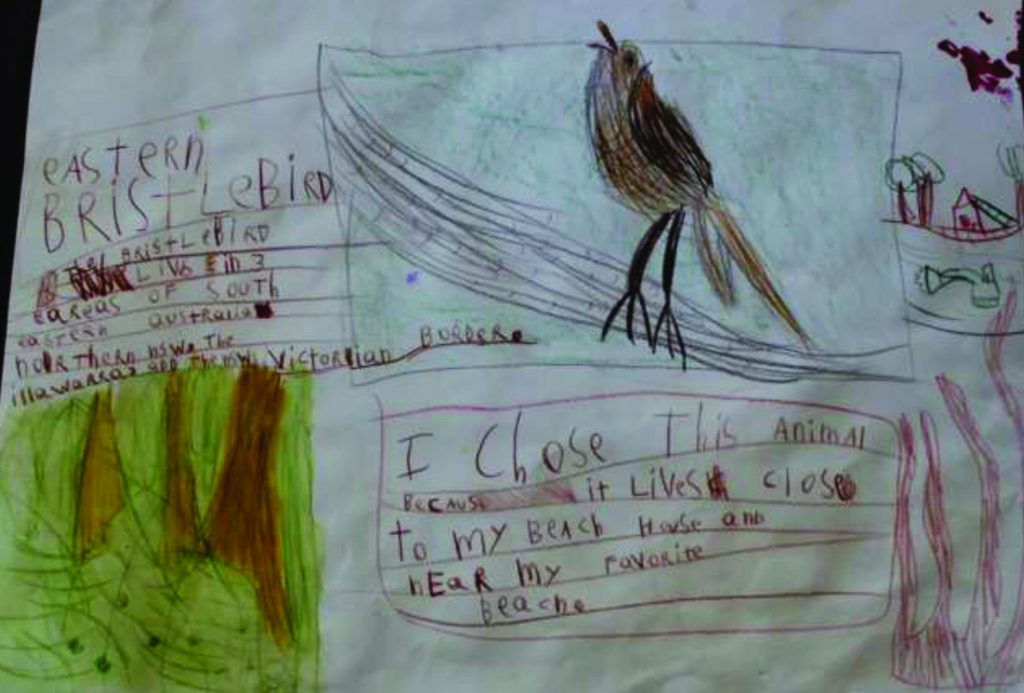
Some of the children’s projects can be seen in the images in this blog:
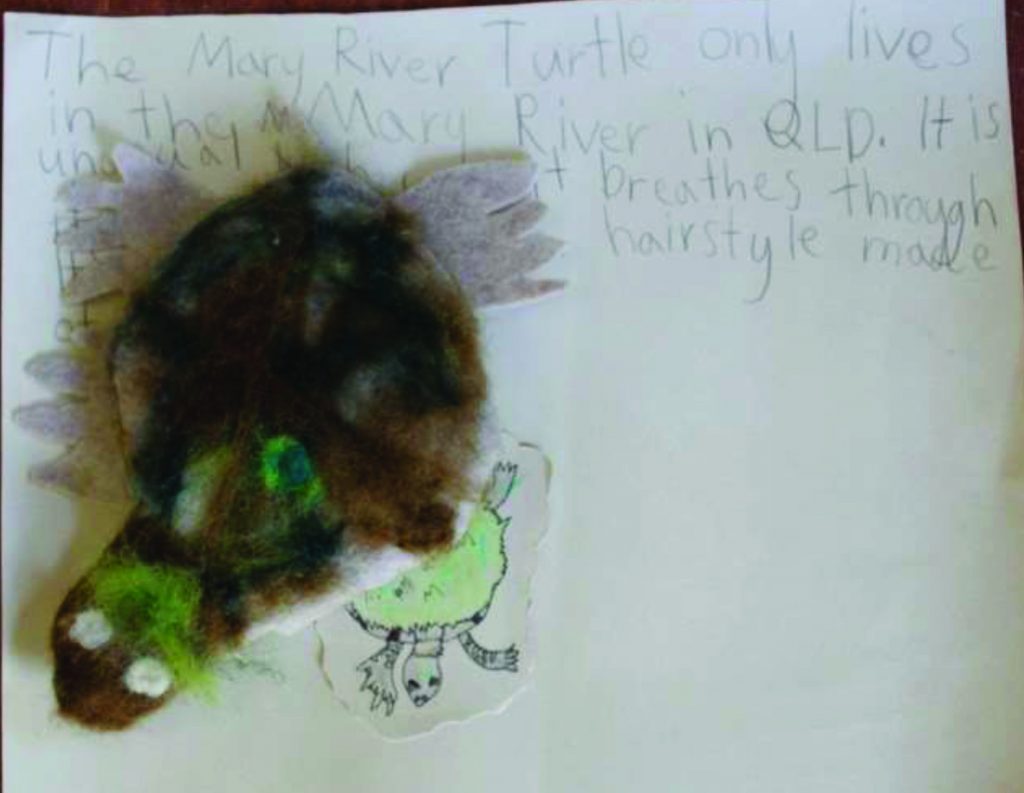
If our school sounds interesting to you and you’d like to learn more we’d love you to book a tour and come see for yourself.
#bushclassroom #learninginlandscape #naturebasedlearning #bluemountainssteinerschool
